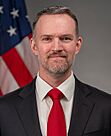Cabinet of the United States facts for kids
The Cabinet of the United States is a group of the most important advisors to the president of the United States. Think of them as the president's main team. They usually meet with the president in a special room near the Oval Office in the White House. The president leads these meetings, but they are not officially a member of the Cabinet themselves.
The Vice President is always part of the Cabinet by law. The other members are usually the heads of different government departments. The president chooses these people, and then the Senate must approve them. Even temporary department heads can join Cabinet meetings. These Cabinet members are chosen by the president and help run their departments. They have a lot of power over their specific areas of government. The president can also invite other important officials to join the Cabinet.
The Cabinet doesn't have its own power to make decisions as a group. They don't vote on things. There are 26 members: the Vice President, 15 department heads, and 10 other officials who are considered "Cabinet-level." Most of these need Senate approval. During meetings, they sit in order of when their department was created, with the oldest departments closest to the president. However, the Vice President doesn't control the Cabinet, and everyone in the Cabinet reports directly to the president.
The president can remove Cabinet members from their jobs at any time without needing Senate approval. The Vice President, however, is elected, not appointed, so they cannot be fired from the Cabinet by the president. While Cabinet members have power over their departments, they usually follow the president's wishes because they can be dismissed. The president can also organize the Cabinet in different ways, like creating smaller groups to work on specific issues. Like all federal officials, Cabinet members can be removed from office through a process called impeachment if they commit serious crimes.
The Constitution of the United States doesn't directly create the Cabinet. Its role comes from a part of the Constitution (Article II, Section 2, Clause 1) that says the president can ask for advice from the main officers of the government departments. Also, the Twenty-fifth Amendment allows the Vice President and a majority of department heads to declare the president unable to do their job. The heads of these departments are also in the line to become president if something happens to the president and vice president. The Secretary of State is the highest-ranking Cabinet member after the Vice President, and is fourth in line to the presidency.
Contents
How the Cabinet Started
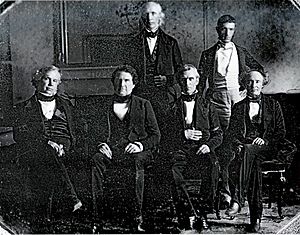
The idea of the Cabinet came from discussions during the 1787 Constitutional Convention. They debated whether the president should make all executive decisions alone or with a group of advisors. The Constitution decided that the president would have the main executive power, but it also allowed the president to ask for written advice from the heads of government departments. The Constitution didn't say what these departments would be or how many there should be.
George Washington, the first president, was the one who officially organized his main officers into a Cabinet. This tradition has continued ever since. Washington's first Cabinet had five members: himself, Secretary of State Thomas Jefferson, Secretary of the Treasury Alexander Hamilton, Secretary of War Henry Knox, and Attorney General Edmund Randolph. The Vice President, John Adams, was not part of Washington's Cabinet at first because the Vice President's job was seen more as a leader in the Senate. It wasn't until the 1900s that Vice Presidents regularly became members of the Cabinet and were seen as part of the executive branch.
Presidents have used Cabinet meetings in different ways. Some presidents, like Abraham Lincoln, had advisors who wanted a Cabinet that acted more like a parliament, but Lincoln didn't agree. In more recent times, Cabinets have grown to include important White House staff members along with department heads. President Ronald Reagan created smaller groups within his Cabinet to look at different policy issues, and later presidents have done the same.
Laws About the Cabinet
There are laws that explain how Cabinet members can act. For example, the heads of executive departments can often make decisions for the president within their areas of responsibility without needing special permission.
There's also a law (the 1967 Federal Anti-Nepotism statute) that stops federal officials from hiring their close family members for certain government jobs, including Cabinet positions.
Another law, the Federal Vacancies Reform Act of 1998, allows an administration to appoint temporary heads for departments from existing employees if a position is empty.
How Cabinet Members Are Approved
The president chooses the heads of the executive departments and other federal agency leaders. Then, the Senate must either approve or reject these choices by a simple majority vote. If approved, the person gets their official document, takes an oath, and starts their job. If the Senate is not meeting, the president can appoint temporary heads for departments.
The elected Vice President does not need Senate approval. The White House Chief of Staff, who is a top staff member in the Executive Office of the President, also does not need Senate approval.
Senate Review Committees
When the president nominates someone for a Cabinet position, a specific Senate committee reviews their qualifications. Here are some examples:
Salaries of Cabinet Members
The heads of executive departments and most other senior federal officers in the Cabinet receive a set salary. As of January 2025, the annual pay for these top positions was $250,600.
The Vice President's annual salary is $235,300. This amount is adjusted over time for the cost of living. The Vice President also receives a pension like other members of Congress.
Current Cabinet and Cabinet-Rank Officials
The people listed below were chosen by President Donald Trump to be part of his Cabinet. They have either been approved by the Senate or are serving temporarily until a permanent person is confirmed.
Vice President and Heads of Executive Departments
The Cabinet always includes the Vice President and the heads of 15 executive departments. They are listed here in the order they would take over the presidency if needed. The Speaker of the House and the President pro tempore of the Senate are also in the line of succession, but they are part of the legislative branch, not the Cabinet.
| Office (How it was created) |
Person in Charge | Started Job |
|---|---|---|
 Vice President (Constitution, Article II, Section I) |
 JD Vance |
January 20, 2025 |
 Secretary of State (22 U.S.C. § 2651a) |

|
January 21, 2025 |
 Secretary of the Treasury (31 U.S.C. § 301) |

|
January 28, 2025 |
 Secretary of Defense (10 U.S.C. § 113) |

|
January 25, 2025 |
 Attorney General (28 U.S.C. § 503) |

|
February 5, 2025 |
 Secretary of the Interior (43 U.S.C. § 1451) |

|
February 1, 2025 |
 Secretary of Agriculture (7 U.S.C. § 2202) |
Brooke Rollins | February 13, 2025 |
 Secretary of Commerce (15 U.S.C. § 1501) |

|
February 21, 2025 |
 Secretary of Labor (29 U.S.C. § 551) |

|
March 11, 2025 |
 Secretary of Health and Human Services (Reorganization Plan No. 1 of 1953, 67 Stat. 631 and 42 U.S.C. § 3501) |
Robert F. Kennedy Jr. | February 13, 2025 |
 Secretary of Housing and Urban Development (42 U.S.C. § 3532) |
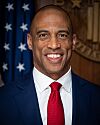
|
February 5, 2025 |
 Secretary of Transportation (49 U.S.C. § 102) |

|
January 28, 2025 |
 Secretary of Energy (42 U.S.C. § 7131) |
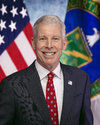
|
February 4, 2025 |
 Secretary of Education (20 U.S.C. § 3411) |

|
March 3, 2025 |
 Secretary of Veterans Affairs (38 U.S.C. § 303) |
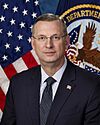
|
February 5, 2025 |
 Secretary of Homeland Security (6 U.S.C. § 112) |
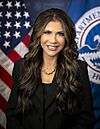
|
January 25, 2025 |
Other Cabinet-Level Officials
The president can also choose other important officials to be part of the Cabinet. These roles can change with each president. These officials are not in the line of succession to the presidency.
| Office | Person in Charge | Started Job |
|---|---|---|
 Administrator of the Environmental Protection Agency (5 U.S.C. § 906, Executive Order 11735) |
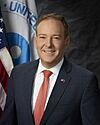 Lee Zeldin |
January 29, 2025 |
 Director of the Office of Management and Budget (31 U.S.C. § 502, Executive Order 11541, Executive Order 11609, Executive Order 11717) |
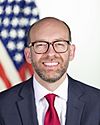 Russell Vought |
February 7, 2025 |
 Director of National Intelligence (50 U.S.C. § 3023) |
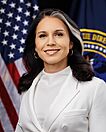 Tulsi Gabbard |
February 12, 2025 |
 Director of the Central Intelligence Agency (50 U.S.C. § 3036) |
 John Ratcliffe |
January 23, 2025 |
 Trade Representative (19 U.S.C. § 2171) |
Jamieson Greer | February 27, 2025 |
 Administrator of the Small Business Administration (15 U.S.C. § 633) |
 Kelly Loeffler |
February 20, 2025 |
 White House Chief of Staff (Pub.L. 76-19, 53 Stat. 561, enacted April 3, 1939, Executive Order 8248, Executive Order 10452, Executive Order 12608) |
Susie Wiles | January 20, 2025 |
Past Cabinet Departments
Over time, some government departments have changed names or been reorganized. Here are a few examples:
- Department of War (1789–1947): This department was in charge of the military. It was renamed the Department of the Army in 1947.
- Post Office Department (1829–1971): This department handled mail. It became the United States Postal Service, which is now an independent agency.
Departments with New Names
Some department names have changed over the years:
- The Secretary of Foreign Affairs was renamed the Secretary of State in 1789.
- The Secretary of War became the Secretary of the Army in 1947.
- The Secretary of Commerce and Labor was split into the Secretary of Commerce and the Secretary of Labor in 1913.
- The Secretary of Health, Education, and Welfare was renamed the Secretary of Health and Human Services in 1979 when education became its own department.
Roles Sometimes in the Cabinet
Some positions are not always in the Cabinet but have been included at different times by various presidents:
- Vice President (regularly since 1929)
- Director of the Office of Management and Budget (often included since 1969)
- White House Chief of Staff (often included since 1993)
- United States Trade Representative (since 1975)
- Administrator of the Environmental Protection Agency (since 1993)
- Administrator of the Small Business Administration (often included since 2012)
- Director of National Intelligence (since 2017)
- Director of the Central Intelligence Agency (often included since 2017)
Ideas for New Cabinet Departments
Throughout history, people have suggested creating new Cabinet departments to handle different areas. Some of these ideas include:
- A Department of Natural Resources, to manage the environment and energy.
- A Department of Peace, to focus on preventing conflicts.
- A Department of Social Welfare, to help with social programs.
- A Department of Business and Labor, to combine efforts for businesses and workers.
- A Department of Environmental Protection, to focus on protecting our planet.
- A Department of Technology, to deal with new technologies.
- A Department of Culture, like in many other countries, to support arts and culture.
See also
 In Spanish: Gabinete de los Estados Unidos para niños
In Spanish: Gabinete de los Estados Unidos para niños
- Black Cabinet
- Brain trust
- Second cabinet of Donald Trump
- Kitchen Cabinet
- List of African-American United States Cabinet members
- List of Hispanic and Latino American United States Cabinet members
- List of female United States Cabinet members
- List of foreign-born United States Cabinet members
- List of people who have held multiple United States Cabinet-level positions
- List of United States Cabinet members who have served more than eight years
- List of United States political appointments that crossed party lines
- United States presidential line of succession





